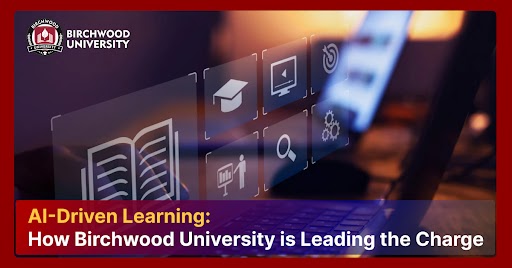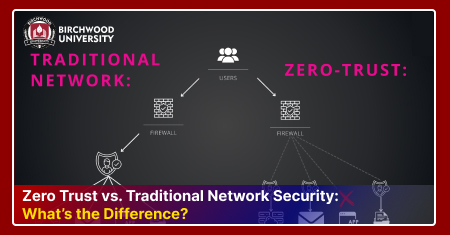TinyML: The Future of AI at the Edge
Oct 10, 2025Smart devices are evolving considerably from simple tools into systems capable of making independent decisions. And driving this revolution is TinyML (Tiny Machine Learning). TinyML is an intelligent tech advancement that brings artificial intelligence right onto small, everyday, and common hardware. Without relying on cloud computing, TinyML allows devices to process data, learn patterns, and react in real time—all on a very small amount of power. From wearables to factory-floor sensors, the technology is moving where intelligence takes place and how it occurs—at the edge.
So, why is TinyML so compelling? It's not simply speed or efficiency. It's about taking machine learning to the source of data itself—your smartwatch, a home security camera, or an industrial machine's sensor. The payoff? Increased response rates, increased privacy, reduced energy consumption, and more intelligent, responsive technology—on the edge.
Let's get into what TinyML is, why it's important, and how it's impacting the future of AI and edge computing.
What Is TinyML? And How TinyML Works on Edge Devices
The Concept That Shrinks AI Into the Everyday
Tiny Machine Learning, or TinyML, is just as it sounds—machine learning, but miniaturized to the point of being small enough to fit on a coin-sized device. No dependence on centralized cloud infrastructure or data centers. No constant cloud pings. Just intelligent, self-sufficient smarts residing right in your pocket, watch, or power meter.
It's not that kind of artificial intelligence that's attempting to compose novels or symphonies. TinyML is the sort that humbly enables your smart lock, your wearable fitness monitor, or a bridge's vibration sensor. It listens, it learns, it responds—and does so on the edge, near the source of the data, without needing to "call home" for assistance.
It’s intelligence that lives right where it's needed. And that makes all the difference.
How does TinyML work?
TinyML operates by training machine-learning models on highly capable computers and then optimizing these same models for deployment on small, low-power devices like sensors or microcontrollers with severely limited processing capabilities: usually less than 1 milliwatt and under 1 MB of memory.
Have a look at a step-by-step overview of how TinyML functions:
1. Model Training on Full Systems
Data will be initially gathered and a model will be trained on either a desktop or a cloud GPU using any of the common AI software frameworks such as TensorFlow or PyTorch. The process is focused on gaining accuracy without regard to energy efficiency.
2. Model Optimization and Compression
After it is trained, the model can be compressed using techniques like quantization, pruning, and knowledge distillation.
Quantization attempts to lower the numerical precision (32 bits to 8 bits).
Pruning removes unimportant connections and neurons.
Distillation moves knowledge from a large model to a smaller model.
These methods together decrease memory usage and power usage while retaining the essential performance.
3. Hardware Deployment
The optimized version is finally deployed to a microcontroller (MCU) platform, including those from the Arduino, Raspberry Pi, STM32 families, etc. Those chips have very limited RAM (from tens to hundreds of kilobytes) and consume power to ultra-low range (typically less than 1mW).
4. On-Device Inference
The model is doing inference on the device, which means it can detect patterns (e.g., a sound, motion, or vibration) locally rather than on the cloud. Thus, the decisions can be made faster, and it has somewhat improved privacy and lowered latency.
5. Local or Hybrid Learning
Some applicable solutions allow a device to self-adapt or fine-tune over time using federated or incremental machine learning so that the TinyML system can become more intelligent and personalized, instead of starting from zero each time it learns.
TensorFlow Lite for Microcontrollers, Edge Impulse and TinyMLPerf are some of the accessible frameworks out there that can make this efficient even for small-startup companies or students.
Why TinyML Matters in 2025 and Beyond
We’ve been chasing faster, bigger, and more powerful for years. More cloud storage. More compute. More of everything. But the world is changing. As more devices come online—an estimated 75 billion by 2025—the cost of sending every bit of data to the cloud is not just inefficient; it's unsustainable.
This is where TinyML flips the model.
Instead of sending data elsewhere, it processes it locally. That is:
Processes data directly on-device
Improves response speed with real-time AI
Keeps user data private—no cloud needed
Reduces energy usage, ideal for wearables and IoT
TinyML is not attempting to muscle out the cloud. It's just adding intelligence to where it makes the most sense.
Below points highlight the importance of TinyML:
1. Transitioning from Data-Hungry to Data-Smart
Due to the massive number of IoT devices that are coming into existence, routing all data to cloud storage is cumbersome, costly, and inefficient. TinyML helps devices analyze the data locally and sends only the important data.
For example, smart factories can flag machine failures in real time without overloading the network.
Wearables can also inform the user if they detect a heart arrhythmia, even without cloud capabilities.
2. Anonymity by Design
Because TinyML can maximize the amount of data sent out to the device, the data remains anonymous. It is no longer necessary to send health data, audio data, and environmental data to the cloud.
This also covers the requirement of privacy laws (like GDPR and HIPAA).
The user is always in control of their personal data.
3. Regardless of Power Consumption, TinyML Saves Costs
TinyML can operate on incredibly low power, hence TinyML devices can run on small batteries or solar power for years at a time.
This will reduce electricity costs due to operational needs and maintenance costs over time.
Also, TinyML offers serviceable methods in off-the-grid locations, like farms or tracks in forests.
4. Green and Sustainable AI
Typically, AI takes a lot of energy, but TinyML performs analytics closer to the data (on the edge) to save power or emissions.
This helps companies and governments meet their sustainability goals.
TinyML is valuable for smart energy systems, monitoring environmental contexts, and tracking wildlife.
5. AI that Works Everywhere
With TinyML, AI can be made accessible and practical for everyone.
Farmers, students, and healthcare workers can make use of AI, even in the absence of reliable internet.
It brings smart solutions to remote and underserved locations.
The Magic Is in the Scale
What's truly amazing about TinyML isn't any single device. It's what you get when you scale it—thousands, even millions of small, smart machines quietly operating across environments.
Think of the smart cities: traffic lights adapting to real-time traffic. Streetlights dimming when nobody's there. Public transport tracks passenger density—all processed at the edge. And since every device is using microwatts of power, this can occur at scale without siphoning off energy grids or needing costly infrastructure.
So, what's inside these devices?
Let's take a look under the hood—without going too deep.
Most TinyML devices run on microcontrollers, the kind you’ll find in an electric toothbrush or garage door opener. These chips often have less than 1MB of memory. Yes, that’s megabytes—not gigabytes.
In order to make this work, ML models are specifically trained and "shrunk down" with methods such as quantization and pruning—technical methods that result in lean, optimized, and custom-fit models.
Tools such as TensorFlow Lite for Microcontrollers and platforms such as Edge Impulse are making it easier than ever for developers to create these models—even without a Ph.D. in machine learning.
What Makes TinyML Different from Regular Edge AI?
TinyML vs. Edge AI: What’s the Difference?
It’s a fair question. After all, edge computing has been a buzzword for years now.
The difference lies in scale and size. Most edge AI applications still assume some decent hardware: GPUs, multicore CPUs, and steady power. TinyML, on the other hand, thrives on constraints. It’s built for devices under 1 mW of power, often with no operating system at all.
It's AI for the margins—for environments where space is limited, connectivity is poor, and power is precious.
Impact of TinyML in the Real-World
TinyML is working to change the industries all over the world. It is putting intelligence on device to make systems quicker, more energy-efficient, and more privacy-sensitive. Let's look at some of the way this is happening across sectors:
1. Healthcare: Intelligent Care Without the Cloud
TinyML is actually improving patient care in ways that even the legacy cloud-based AI is not able to do.
Wearable monitors: A small patch or wearable to monitor breathing or heart rhythms in a rural clinic. TinyML runs the analysis on the device directly and warns staff right away if something goes wrong. No connectivity is needed, and sensitive health information never has to leave the device.
Hearing aids: With TinyML, hearing aids can automatically adjust to the environment using TinyML, cutting out noise in real-time. Thus, apps and cloud connections are no longer required, so everything is faster and more discreet.
2. Agriculture: Smarter Fields, Better Harvests
TinyML makes it easier for farmers to farm in a smarter way instead of harder.
Soil & pest monitoring: In Kenya and India, solar-powered TinyML sensors monitor soil moisture, nutrient content, and pest presence. Processing of this information on the device helps farmers to forecast irrigation schedules or pest outbreaks without frequent cloud uploads.
Energy-efficient operation: The sensors can work continuously for months, even years also, on a single battery. This is perfect for remote farms where electricity is not always available.
Thus, by supporting data-driven agriculture in rural areas, TinyML is enabling farmers to grow more effectively, conserve water, and minimize the crop losses while maintaining low costs.
3. Industry Applications: Predictive Maintenance Simplified Through TinyML
Additionally, TinyML is transforming the way industries maintain machinery.
Embedded machine learning: Machines in a factory have sensors that monitor vibrations, temperature, and other signals. TinyML models recognize anomalies locally and only alert maintenance staff when something unusual is detected.
Efficiency and savings: This method avoids the streaming of huge data volumes to a server. This comes with fewer machine failures, less downtime, and less operational expenditure.
4. Environment: Listening to Nature
Lastly, TinyML is also enhancing the effectiveness of environmental monitoring.
Wildlife protection acoustic sensors: TinyML-powered sensors can pick up sounds such as poaching or illegal logging within far-off forests. They process audio locally to minimize the need for continuous connectivity.
Climate and pollution monitoring: TinyML sensors monitor air quality, water levels, and other parameters relevant to the environment, thereby alerting the authorities in case the conditions change.
Challenges Facing TinyML Adoption
While its potential is great, TinyML isn't quite plug-and-play yet.
Model accuracy suffers when compressed.
Developers have to balance both software and embedded hardware expertise.
Security updates are more difficult to push out to tiny devices.
And interoperability—getting all these devices to "speak the same language"—still is.
But the environment is catching up rapidly. With support from tech giants and startups, toolkits are getting more intuitive, and hardware is reducing in price.
Why TinyML Is the Future of Embedded AI
The true potential of TinyML isn't what it can do—it's who it makes possible.
A startup in Kenya can build a crop-monitoring tool without needing cloud servers. A small hospital in an Indian village can run medical tests without being connected to the internet. A student using an Arduino can create their first smart device without ever needing access to a big data center.
What Are the Emerging Frontiers in TinyML?
TinyML is evolving in an unprecedented manner. It is enabling devices to learn and improve over time. For instance, a hearing aid may learn to match the hearing habit of a user, or an air monitor may adapt to conditions in the locality. Such evolving devices get smarter without needing human intervention.
TinyML is also converging with other technologies:
- Blockchain: Secures and authenticates data locally in a tamper-proof manner.
- Renewable energy: Intelligent solar panels change automatically with light, optimizing efficiency.
- Robotics: Small robots or drones can work in teams and share tasks without a master controller.
It's all about hardware enhancements. Low-energy processors such as RISC-V analog computing, and compute-in-memory architectures help devices to process more sophisticated with little power, making them suitable for isolated or limited areas.
What's Next for TinyML and TinyAI
The future of TinyML is on empowering smarter devices to be more independent, adaptive, and efficient. Instead of depending on large data centers, intelligence will be made distributed across small devices as already mentioned in this article. Let's see what's ahead for TinyML:
Emerging Research and New Directions
Studies indicate that next-gen TinyML systems won't simply be scaled-down versions of current models—they will be remodeled for the edge. Researchers are currently investigating approaches like:
- System-algorithm co-design: Designing hardware and software together to execute more intelligently on microcontrollers.
- Neuromorphic techniques: Developing models imitating the human brain for more effective learning.
- Ultra-low power computing: Enabling devices to accomplish more yet consume very little power.
These developments will drive TinyML devices to perform more complex tasks, even with restricted memory and processing.
On-device Learning and Adaptive Intelligence
One of the developments in the pipeline is on-device learning. Contrary to existing systems, which merely run pre-trained models, upcoming TinyML devices may learn and adjust in real time. Like for instance, in agriculture, the sensors may monitor and learn environmental trends all the time. Similarly, in healthcare, wearables may change the diagnosis patterns depending on individual patient information. The benefits include:
- Continuous learning at the device level.
- Improved privacy as data remains local
- Robust systems that function even when offline
- Efficient energy-based adaptive processing
Redefining What "Tiny" Means
As the current technology advances, even today's small models will look huge tomorrow. Hardware and software improvements ensure that intelligence can be packed into increasingly minuscule devices without diminishing ability. What is "tiny" is relative and changes swiftly with rapid improvements in efficiency and design. Intelligence will not be centralized in the future. Rather, billions of tiny intelligent devices will collaborate and make systems agile, responsive, and sustainable.
TinyML vs. Edge AI vs. Cloud AI
Let's understand major differences between TinyML, Edge AI and Cloud AI:
FAQs:
1. What is TinyML?
TinyML is the capability of executing smart computing on small devices with very less power. These devices can be sensors, wearables, and microcontrollers. According to ABI Research, ~2.5 billion TinyML devices are expected globally by 2030.
2. Why is TinyML significant today?
TinyML helps devices to process information locally, react in real time, conserve energy, protect the privacy without the requirement of cloud servers.
3. What makes TinyML the technology of the future?
Future TinyML will learn and adapt on devices, operate offline, and support more developed applications in remote or resource-constrained locations.
4. Who are the beneficiaries of TinyML?
Students, startups, farmers, healthcare professionals, and environmental teams can leverage TinyML to develop useful, low-cost, and localized solutions.
5. How does TinyML work?
TinyML devices collect sensor data, then preprocess it, and run pre-trained ML models locally. They analyze data, make decisions, and take actions in real time, all while being optimized for minimal power and memory for efficient performance.






